It’s crazy to think that I started rambling about Wardrobe planning on this blog back in 2016. In hindsight of world events, it really feels like a lifetime ago. Since my earliest late-night musings, I’ve played around with the Wardrobe Architect, the Curated Closet, and some 80s-era style classification systems. All of these posts have been indexed on my Wardrobe Planning Page under “Wardrobe Planning Series.” It’s interesting, because whenever people talk about “finding your style” they always refer to it as being a “journey.” I never really understood that before; it always seemed to me that you’d like something or you wouldn’t. You’d know if it suited you or not. It should be easy.
Except if it were really that easy, I feel like it wouldn’t bear as much thought or consideration as I’ve given this topic. I suppose the sheer number of books that have been written about the significance of dress and style just highlight how complex a topic it is. When I started I was thinking of a “wardrobe” as “cute clothes you can wear and look like an adult.” I couldn’t really see how style was a “journey.” Now I feel like I know better. Wardrobe is really a means of nonverbal communication, and it is complex. Ever since I discovered style and color typing last summer, I’ve been low-key obsessed with the concept, and I’ve spent quite a bit of time reading and thinking about it. By the end of last fall, I thought I’d figured it out – I was a Soft Classic/Bright Winter combo, and I was happy to explore that space. The funny thing, though, was that I didn’t really change anything. I still sewed on a whim, without much of a plan, and while some of my garments could have been described as “Soft Classic” or possibly “Bright Winter,” there was some niggling part of me that wasn’t fully satisfied with the recommendations. I explored lots of other style systems, and pondered if perhaps I really belonged in Dramatic Classic or the now defunct pure Classic categories. I obsessively studied the body type descriptions and style recommendations, trying to figure out where I best fit. The problem was I felt a connection to all of the Classic categories, but I never fully felt like I fit into any single one of the categories.
The first major upset to my Soft Classic/Bright Winter idea came about when my sister visited for the holidays. I thought it’d be fun to DIY type her using the Kibbe quiz and paint chip samples, and she overwhelmingly came through the quiz as a Kibbe Romantic with a Dark Autumn color palette. It’s interesting, because I don’t see Romantic styles done up in these colors much on the internet, but the more I considered it, the more it seemed like a perfect style starting point for my sister. She can flit into Soft Gamine territory a bit, I think, but she really does pull off that girly Romantic style quite well. And Dark Autumn was just made to compliment her skin and eye coloring. Not to mention that it allows her to wear all of her favorite colors still. Her instant connection to the style and color palette was a bit odd – normally I’m the decisive one, yet I’d been dithering over my own style identity for months, whereas we had her pegged in about an hour. On top of that, my sister has formal art training and an eye for colors. I told her I’d been debating between Bright Winter and True Winter for months, and after holding up comparison cards, she called me out as being True Winter nearly instantly.
I’d been suspecting that I might not be a Bright Winter when a few of my lipstick purchases weren’t really working out, color wise. I bought some very bright pinks because I’d been having such lucks with the bright reds, but, no go. I mean, I think they looked ok, but I’d always chickened out and never wore them out of the house. I was much happier in a true, deep red or a less punchy pink. So when my sister delivered her verdict, I wasn’t totally surprised. At first I was a bit sad to lose some of the really poppy Bright Winter colors, but I realized that True Winter still gave me plenty of deep, saturated tones to work with, and my longtime insistence that I could rock black was somewhat vindicated.
So I’ve been considering my wardrobe and sewing plans from the perspective of a True Winter since December, and so far I’m happy with it. When I set out plans for my Sew Geeky challenge this year, I did pull colors from the True Winter cards, and I have to say I’ve enjoyed the results in my first mini collection. However, something still felt off about trying to fit it into the style identities I’d been playing with. After looking at the composite photos I realized the problem – it just didn’t feel “Classic,” Soft or otherwise. Granted, I was attempting to interpret Disney’s interpretation of 1400s gypsy style into modern sensibilities, and I think it was successful at that. I also thought it was very evocative of a style I’d like to be wearing. But that just didn’t jive with the image of the symmetric, perfect, gracious, Soft Classic lady I’d conjured in my head. And every time I’d tried to dress like that Classic image, I’d felt stiff, awkward, and uncomfortable. Even a simple button front shirt was feeling too restrictive and cumbersome to wear out of the house some days. All of this set me back to pondering. Was it possible I wasn’t a Classic?
As part of my initial research, I became obsessed with the various typing systems and looked into as many as I could find. And while I think I’ve found valuable information in all of the many various style systems I’ve explored, the one that I keep coming back to is Kibbe. Something about finding the synergy of the whole that come from analysis of the parts makes sense to me. Having done quite a bit of research into the system over the summer, I knew there was no way I was any type of Dramatic, Romantic, or Gamine. I knew that I had no desire to dress in the boxy Boho Natural styles, and Classic had always seemed the most logical fit. But the results of the 6-in-6 mini wardrobe gave me pause – Could I, in any way, possibly be some sort of Natural?
I probably would have dithered over this much longer than I did had Aly Art not posted videos on the Body Types of Celebrities, Comparison of Body Types, and Who Wore It Better videos over the past few weeks. Her description of sharp vs. blunt vs. rounded lines and how these apply to body features really made me rethink how I’d scored myself on the Kibbe test originally. After pondering a few days (and spending an uncomfortably long period of time staring at my face), I retook the quiz and came up with a very different score. By the slimmest of margins, I came back as Natural dominant, with significant numbers still falling in the Classic and Theatrical Romantic categories, and a few points in the pure Romantic or Pure Dramatic categories. With this mix, my rescore firmly placed me in the Soft Natural category.
I hadn’t really done that much thinking about the Natural groups at all before this; the loose, unconstructed silhouettes that were evocative of the parent group didn’t interest me or suit my ideas of style at all. And I in no way have the body of the “Supermodels of the 90s” that are so often pointed to as examples of the Natural group. But the more I dug into the actual Kibbe description and recommendations for Soft Natural, the more I felt like I was having a sudden light bulb moment. Everything felt like it was clicking into place. The physical description of a Soft Natural had me nodding in agreement much more than any of the Classic descriptions had done. And the emphasis on soft waist definition, draping, and asymmetry were 100% up my ally. Even the celebrity style icons of Soft Natural were so much more relatable to me – I felt like I could raid Natalie Wood and Carole Lombard’s closets; there was an instant style connection there that I’d never had with the ultimate Classic Grace Kelly. Don’t get me wrong – Grace Kelly (a Kibbe Classic) and Audrey Hepburn (a Kibbe Flamboyant Gamine) are stunning style icons, but I never felt a real connection with them on the sort of intangible level that other people seemed to feel for Hollywood’s former stars.
I think the best way to describe this is to use the film Gypsy as an example. In the film, Natalie Wood’s character goes through life as the less talented child raised by an overbearing stage mother. As Vaudeville dies out, she turns to burlesque as a way to make a name for herself on the stage. At a certain point in the film, while she she is all done up ready for her performance, she stops, looks at the mirror, and remarks, “I’m a pretty girl, Mama.” Despite their great skills as actresses, it’s hard to imagine Grace Kelly or Audrey Hepburn delivering this line. They’re simply too pretty. It’s easy to imagine them as eingenues who’ve yet to come into their own; it’s impossible to imagine the Princess of Monaco as the back-end of a cow. Yet when I think of the many great roles of these Hollywood legends, this is the line I connect to, this is the line that reverberates with me. I’m sure there are some deep psychological implications of this, not in the least related to a lifetime of growing up skating, but I’ll leave those deep thoughts for another day.
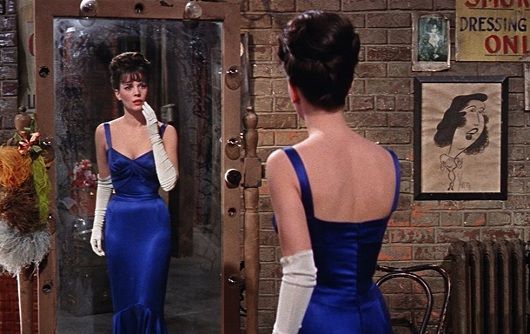
Just to further test this theory, I went ahead with the “paste yourself in a collage of Kibbe verified celebrities” exercise. Before I’d considered Soft Natural, I felt as though I fit best with the True Classics, as opposed to either Dramatic or Soft Classic. But after adding in the Soft Natural Collage, well, let’s just say that I’m even more convinced I belong in the Soft Natural camp.
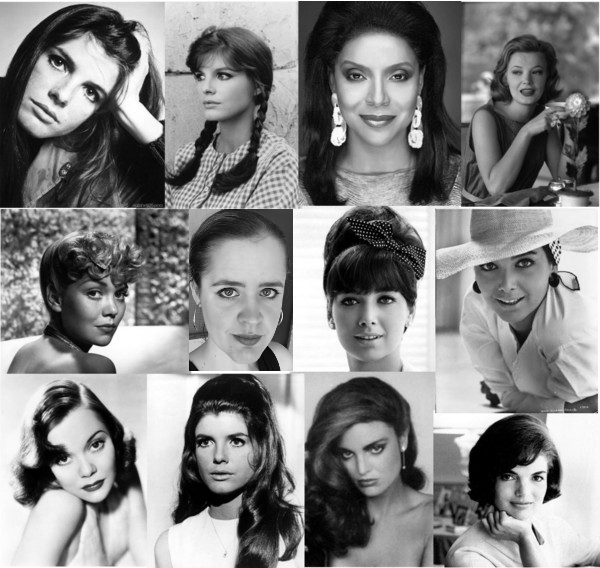
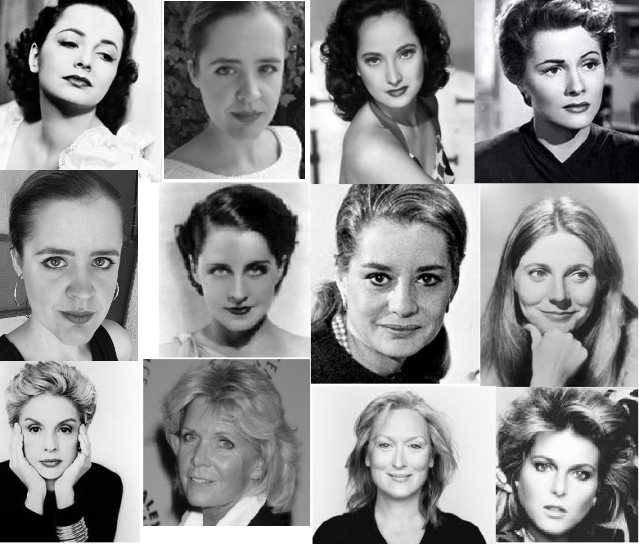

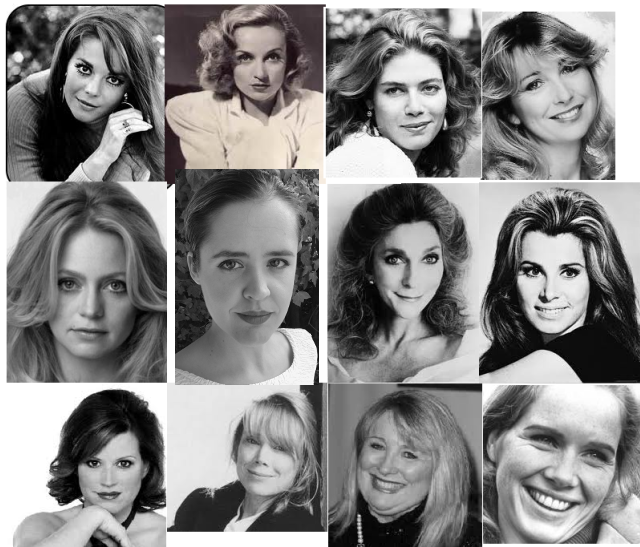
It’s interesting how the variations are slight between these four groups – in online discussion forums there are often remarks about how challenging it is to discern between Soft Classic and Soft Natural, but I think all of the Classics are so blended that it can be difficult to see the difference. It’s also interesting to put the types into a graph, and see how closely they are related:
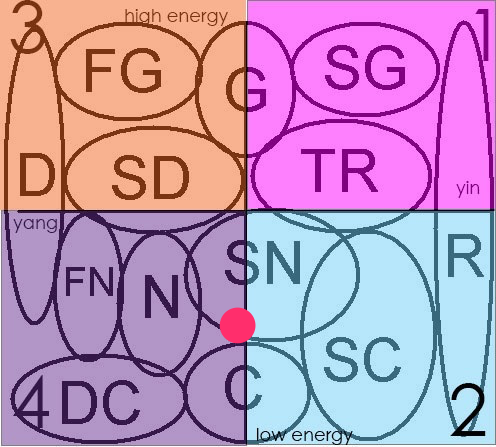
So, now that’s I’ve properly rambled and beat the discussion of this topic to death, let’s just say that I’ll be taking the Soft Natural recommendations into consideration as I move forward with my Sew Geeky plans. So far I think what I’ve made actually falls pretty neatly into a True Winter/Soft Natural vibe. I’ve still got quite a bit of sewing I’d like to do for my spring collection, and, honestly, it was sort of shocking to me how well many of my sewing patterns and plans already fit into the Soft Natural recommendations and guidelines. It’s funny, because everyone keeps saying to do what “feels right” and that “you’ll know” when it really comes down to this style stuff. And in some way I guess that’s what I’ve been doing. Still, there’s something to be said for knowing the why of things. Have I spent an inordinate amount of time thinking about this? Sure. Has it ruined my ability to watch TV or film because I now try to do a Kibbe analysis of the actresses in my head? Yes. Has it given me clarity and insight into my own personal preferences? Yes.
I finally feel like I’ve had that “journey” of self discovery, and I finally feel a contentment at accepting what I’ve found. Things have clicked; intellectual I feel satisfied. Rather than pondering systems and base types, I feel like I can finally move on to personalization of the style, since I know these base recommendations will work for me – they are precisely the sorts of things I want to wear all the time anyay. In light of the idea that style really is a continuum, and the idea that I fall pretty closely to that Soft Natural/Classic border, it makes sense that I’d be drawn to and inspired by Classic looks, and I think I have enough of that balance to incorporate that into my personalization of the Soft Natural base style. Going through this process of self-reflection has also made me more excited to carry on with my Sew Geeky challenge. I’ve got a few more pieces I want to add to it, hopefully this week, but then there’ll likely be something of a drought of personal sewing, because I really need to get cracking on all the commissions I’ve got piled up.
Anyway, if you’ve read this far I hope this ramble was helpful. This was really more of an introspective post, but it seemed to fit with the wardrobe planning I’ve been doing off and on for the past few years, and I thought it might be nice to have to refer back to in the future. Plus, it’ll get things out of my brain and give me space to move on to the next. I’m sure there is quite a bit in here to unpack, and this post is probably not quite so general as to be immediately useful to most readers, but, as always, any comments or insight you may have regarding style types/systems/icon/designations are more than welcome.
Interesting because I have never analysed my colouring and looks like this. Never really occurred to me. I suppose could be down to age and the fact I pretty much know how I want to look. Although in fairness it probably took my till I was about 26 to 30 to know what I like. To be honest not something I would worry too much about although if it helps you make the clothing you actually like I can see that would be invaluable and possibly also save a great deal of money by you not making things you do not like/ suit. I supppose maybe once I can actually sew well enough to be reasonably sure what I make will actually be wearable then I may delve more into this analysis of style/looks etc. Wel worth the read though so thanks for writing.
LikeLike
Yes, I think if you know what you like then this sort of in-depth analysis probably is unnecessary (though I think it can still be sort of fun, if you are into overthinking and in-depth analysis). I think the interesting thing for me though, is that with this analysis I can see in hindsight why I’ve enjoyed certain things I’ve made more than others. I can think of a few things that I’ve loved (LOVED) the pattern but hated the fabric/color, and I can think of others where the patterns been at fault, even though the resulting garment turned out just fine. I’ve even got a few older RTW items I’ve never worn, even though I love the color and the fabric… But they just don’t feel “right” whenever I put them on. I feel like now I’ve got a clearer idea of why I like certain items (colors and styles), which I think will be helpful in pairing together fabrics and patterns in the future.
I also think it’ll help me leave certain items behind at the fabric store… I’ve noticed that I’m much better able to appreciate the beauty of things but realize that they aren’t for me. When I started sewing I bought A LOT of fabric. For me, learning/experimenting meant I’d try (and buy) a lot of things and see what stuck. I got excited by a lot of the shiny exciting pretty fabrics/patterns/prints/etc. I do think the advice that a lot of this style analysis is innate and intuitive is pretty true – I still love a LOT of the fabric in my stash. But there’s also a lot I’m looking at and realizing I bought because I saw someone else looking fabulous, not necessarily because it was the best thing for *me.*
Additionally, ever since I read Marie Kondo’s book, I’ve been interested in pairing down and decluttering my life. Sparking joy is nice, but I *really* like fabric, and a lot of it sparks some level of joy. I think having additional criteria will help me focus using what I have, and being more selective of what I aquire.
So, anyway, yes, this level of analysis probably isn’t really necessary if you have a clearer view of who you are and what you like. I think I’ve been lacking that somewhat for myself (for reasons I may or may not detail more heavily in future), so I think this exercise has been helpful for me. I’m looking at things differently, which I suppose is the point of all this, so in that sense I feel it has been useful. Plus, I’m a bit of a research nerd, so I’ve enjoyed studying all of these systems and figuring out how I fit into them all, so at the very least I had a lot of fun!
LikeLike
I may revisit the Kibbe styles again after this (I have the book somewhere). I think I identified the most with the Flamboyant Natural when I did it but I am too short really. Hmmmmm. PS Natural probably isn’t that loose fitting in the twenty teens, its probably all ponte, scuba and so on, the fabrics were not there in the 80s for the comfort a natural desires in their clothing. Also I don’t personally agree that personality and body shape are connected which I seem to recall is the basis of Kibbe’s approach.
LikeLike
Interesting. I don’t have the book (I should have bought it when it was only $50, instead of the almost $200 it’s going for now), so I’m working off of the various bits of information scattered around the internet. I haven’t seen anything about Kibbe’s approach being related to personality (Dressing Your Truth seems to focus on this idea more). The Style Syntax blog (who writes about Kibbe on the level of an obsessed scholar) even seems to completely dissociate the idea of personality with Kibbe recommendations, and focuses heavily on how to get them to jive in her workbook if they don’t innately match up (i.e., she uses herself as a Flamboyant Gamine and saying she likes punk style, which works well in FG. But if she were Classic and liked punk, she’d have to work a bit harder to get the recommendations and personality to mesh, but that it’d be doable if you reframe the idea of “punk” to more of a vintage/50s biker vibe rather than a 90s rocker vibe). Personality wise, I think I respond to the idea of Classic, but when I think about what I actually like/need/prefer in my clothes, the Soft Natural recommendations makes so much more sense. So, perhaps this is where my personality would push me towards items that seem more traditionally “Classic” (like trench coats, blazers, etc.), but with style features that are more Soft Natural (softer fabrics, less structure, more drape, etc.).
Also, I really like your interpretation of what would pass for Natural in the modern day. It would make me relate to the base type so much more. I totally agree with the idea that Naturals need to be able to move in their clothes – I think perhaps that is why I never really started dressing as a Classic – I *hate* feeling restricted in my movements. Something about a pragmatic need to be self-sufficient and functional perhaps, but also that idea of needing more stretch and movement to provide comfort to a more muscular/wide build makes sense as well.
The really interesting thing about Kibbe (again, working from the internet and not the book), is that I feel like it is easy to dismiss a type when you look at the stereotypical depiction of it on various sites, but when you read the actual recommendations about line, fit, fabric, etc., it is actually pretty general and easily customizable to personal preference and style. It’s also interesting how the general recommendations fit just as easily into modern clothes, as well as the crazy 80s looks he was working with at the time.
So for now I’m enjoying the idea of playing around with the SN recommendations. I suppose it’s possible I may become disenchanted in the future, but right now I’m enjoying the focus it’s giving me in picking out future sewing projects and wardrobe plans.
LikeLike
Yes I can identify with that. The uncomfortable 80s fabric. probably the best was cotton lycra and even then it was very hard to get and very expensive unlike now. I think I should read this book!
LikeLiked by 1 person
Well that was an epic and really interesting post. This seems to be quite a passion of yours, maybe you should look into doing it as a sideline consulting service??
LikeLiked by 2 people
Wow, I never imagined this wardrobe malarkey thing is so complicated!! I looked up this Kibbe system and man oh man, this requires a PhD. No wonder you have been chipping away at it for so long. Looking forward to reading more as you progress on your journey.
LikeLiked by 1 person
Yeah it’s sort of this weird combination of looking at lines and intuition about how everything works together. To be fair, I only first learned about the Kibbe system last July, but I’ve been reading a lot of blogs that are dedicated to it, so I keep thinking about it and trying to understand it.
LikeLiked by 2 people
I am enjoying this series immensely!
LikeLiked by 1 person
I just found your blog and I must say that your “journey” totally resonates with me. I love to overthink and overanalyze everything, but I never applied that tendency to my clothing in my 20s and 30s – I just wore everything because I was young and beautiful! In my 40s I started getting an inkling that maybe I was not a magical unicorn with unlimited clothes-wearing powers, but it was not until the last couple of years in my late 50s that I really tuned into this vast arena of style and color knowledge. Even though it’s incredibly fascinating, I can’t say it has helped much: I think I’m a Soft Autumn but I’ve been typed as a Light Spring. I think I’m an Ethereal Natural but others place me in Classic! At least I have been able to banish all cool colors and contrast from my closet, and the dozens (or hundreds?) of wardrobe planning blogs out there have helped me pinpoint the personal style that I am most comfortable in. Now I make things I know I will wear. So the bottom line is, I might not have learned what my official style is according to Kibbe or anyone else, but I do know what my *own* style is, down to the colors, fabrics, and fit.
LikeLiked by 1 person
I think that’s really the whole goal! In the end, it’s really about knowing yourself, and using time efficiently to make things that are worthwhile.
LikeLike
Personally, the collages make me think you’re soft natural. You have the same bone structure as Goldie Hawn and your nose has natural lines. When I imagine you in classic clothes I don’t think you would look as pretty as you could look and that hair pulled straight back look you are sporting in the collages would look good on a classic but it makes you look very serious and stark. I think you would look great with some of the more shaggy, wavy hairstyles in the soft natural collage, especially ones where there is hair over the face.
LikeLiked by 1 person
It’s funny you suggest that because I actually came to the same conclusion in a later post of my wardrobe planning series! Thanks for your comment – it’s super helpful to get outside perspectives on this stuff.
LikeLike
I’ve come to a similar conclusion recently after reading about essences. I think my essence is natural and I have bevelled shapes and broader shoulders, but I’m short and pear shaped, larger boned than gamine or romantic and can’t wear asymmetrical clothes. My colouring is quite light and tonal and I feel better in understated rather than dramatic, themed or cute outfits. I think I am a cross between natural and classic, with softness tempered by sharper bevelled lines – or bevelled sharpness softened. I was a clear spring but over the years have cooled to the border between light spring, light summer and soft autumn. Your circle on the kibbe chart is a better approach than trying to fit completely into a single category. The analysis is what is useful, not a label.
LikeLike